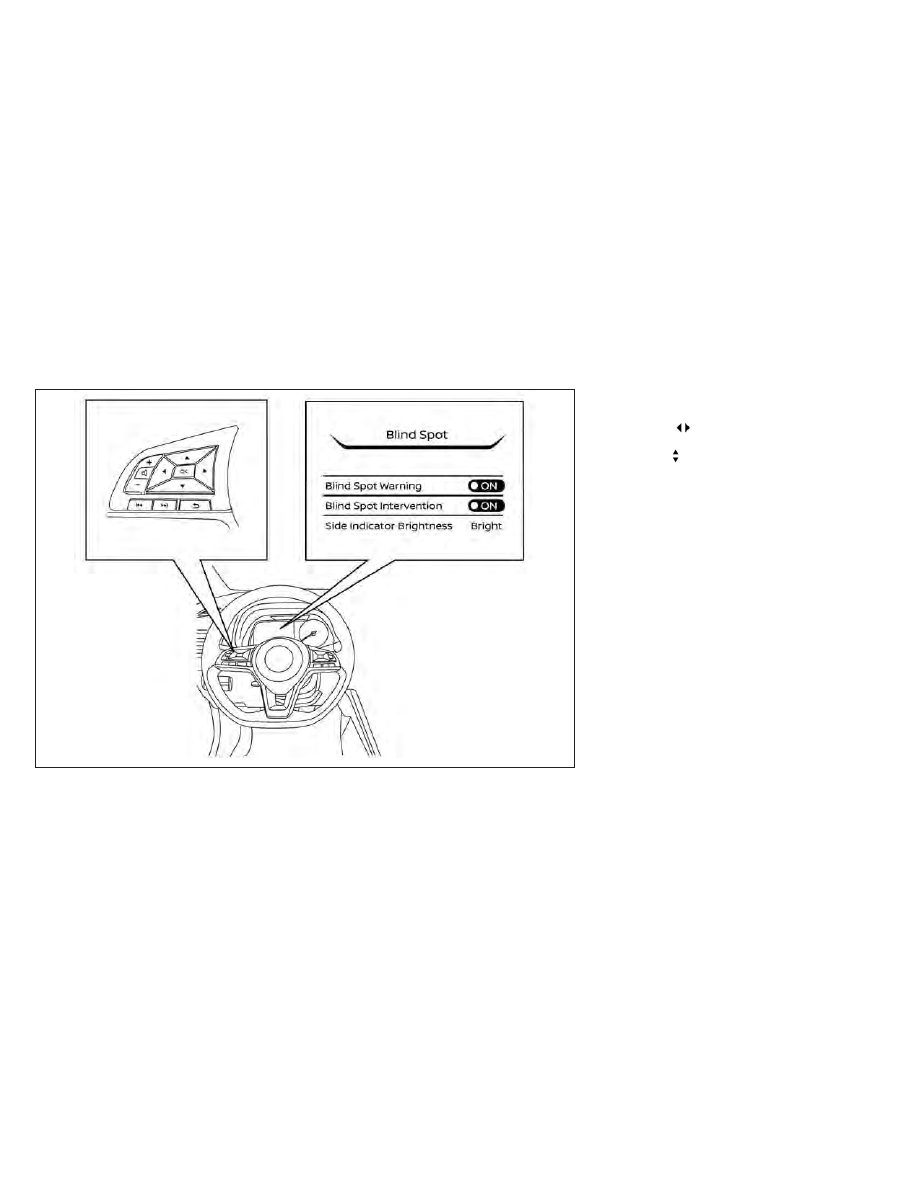Nissan Leaf (2022 year). Manual in english - page 23

HOW TO ENABLE/DISABLE THE
BSW SYSTEM
Perform the following steps to enable or
disable the BSW system:
1. Press the
button until “Settings” dis-
plays in the vehicle information display.
Use the
button to select “Driver As-
sistance.” Then press the OK button.
2. Select “Blind Spot” and press the OK
button.
3. Select “Blind Spot Warning” and use the
OK button to turn the system on or off.
NOTE:
When enabling/disabling the system,
the system will retain current settings
even if the EV system is restarted.
LSD3651
5-38
Starting and driving